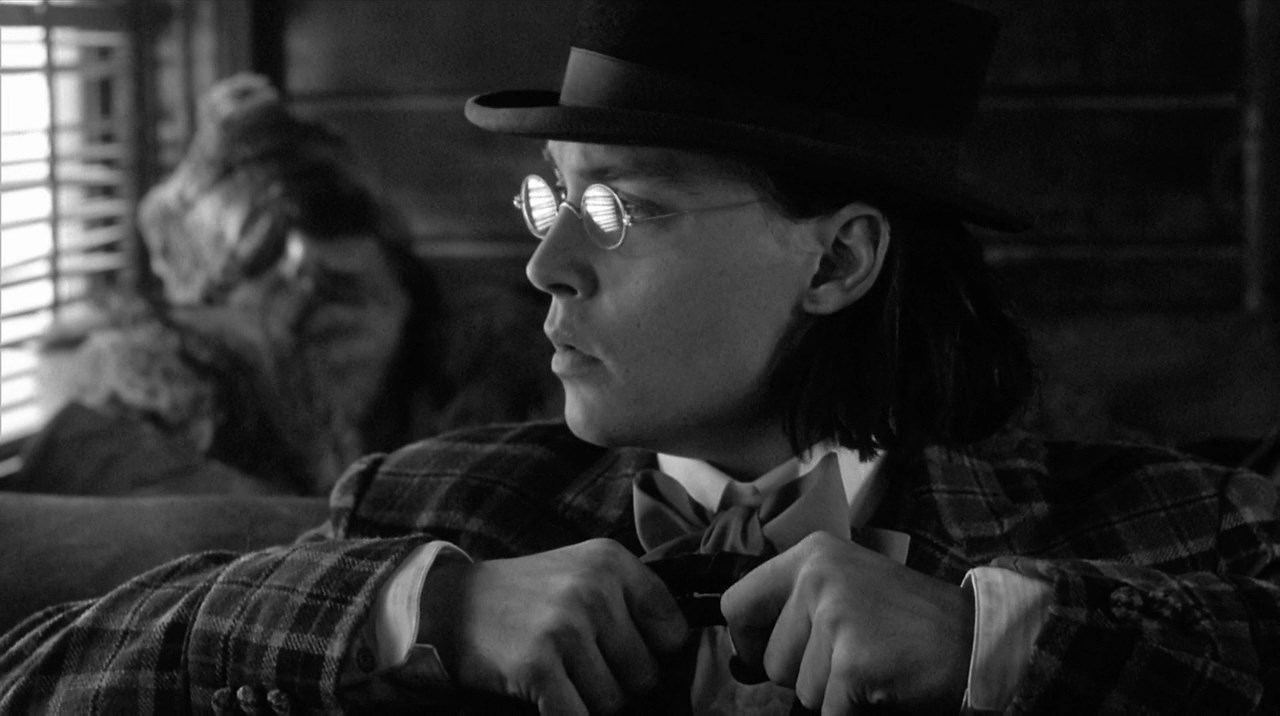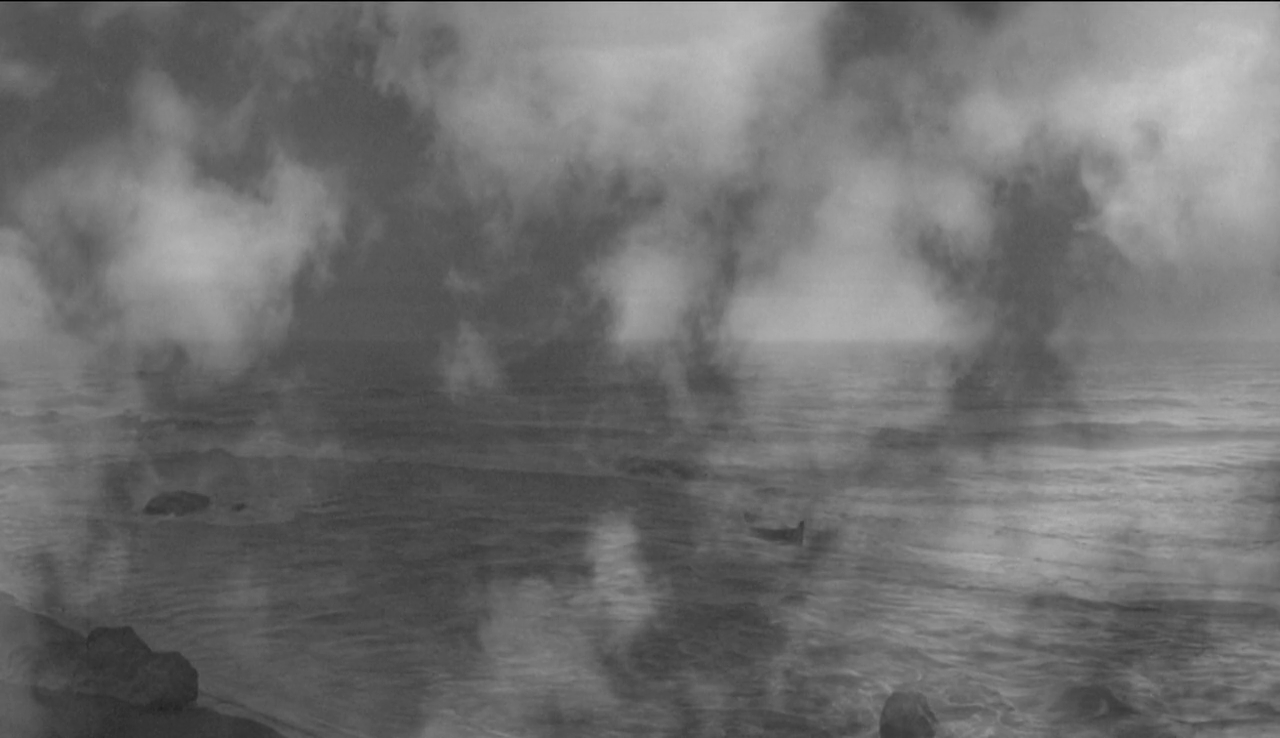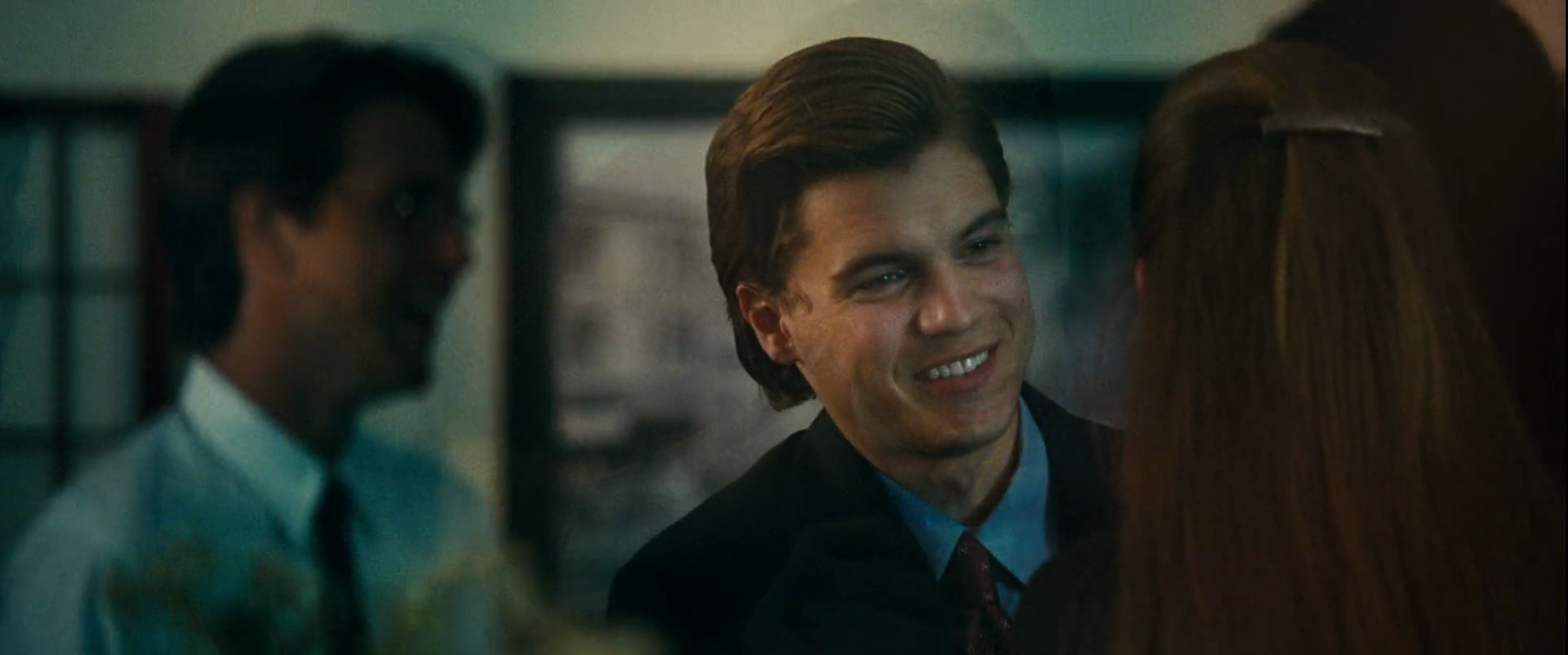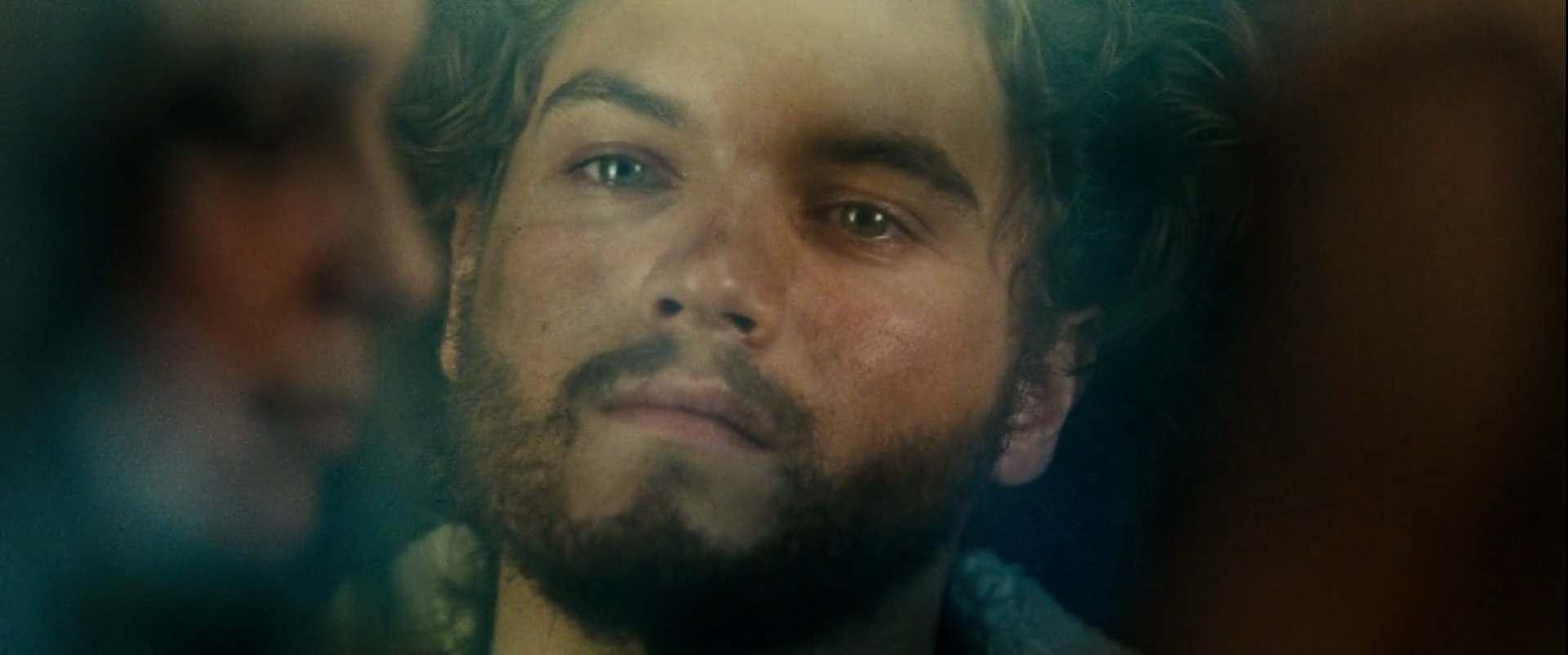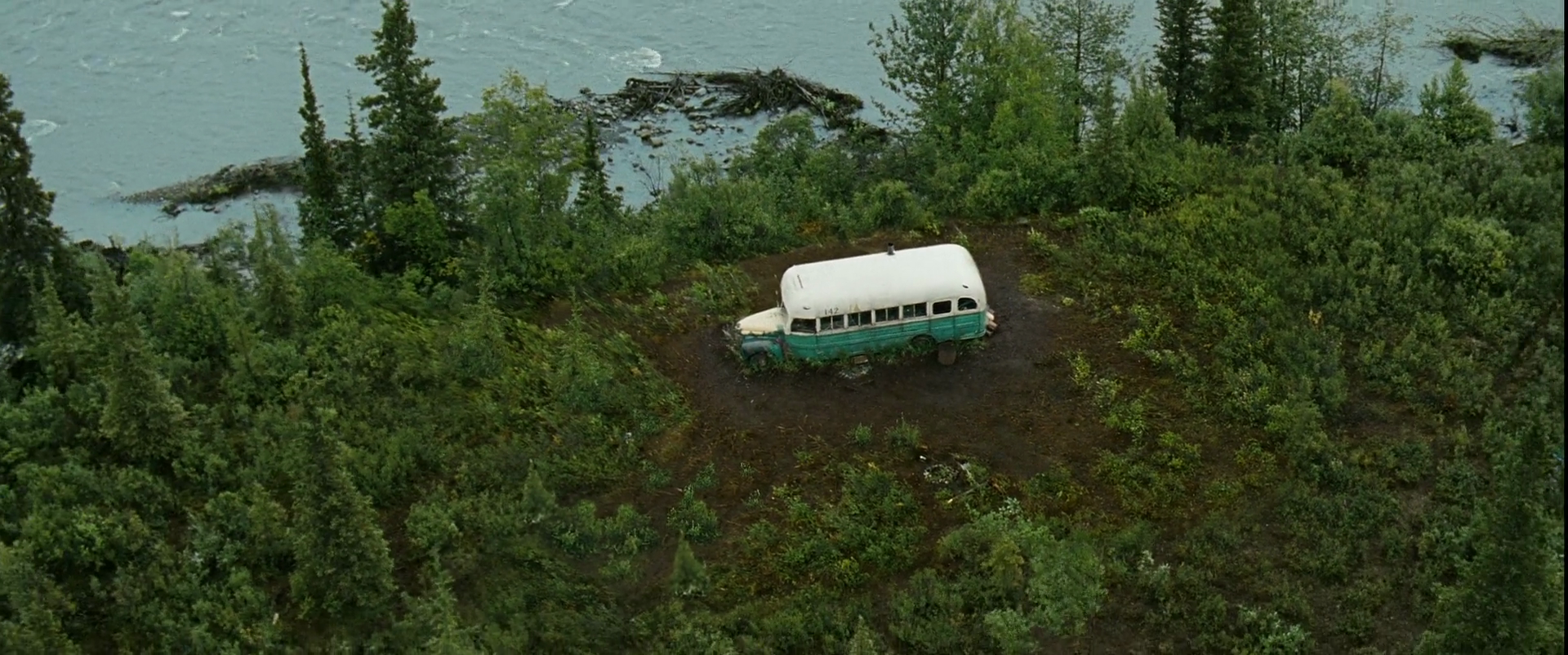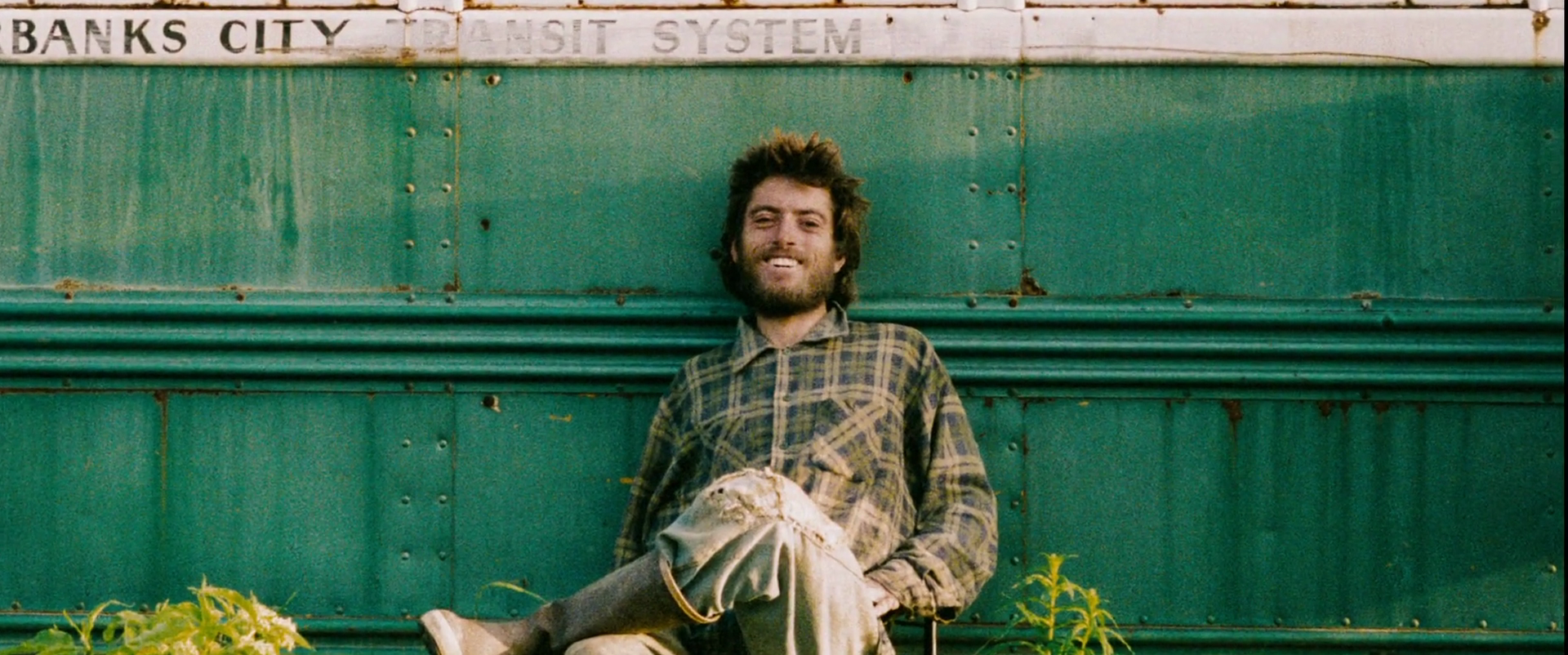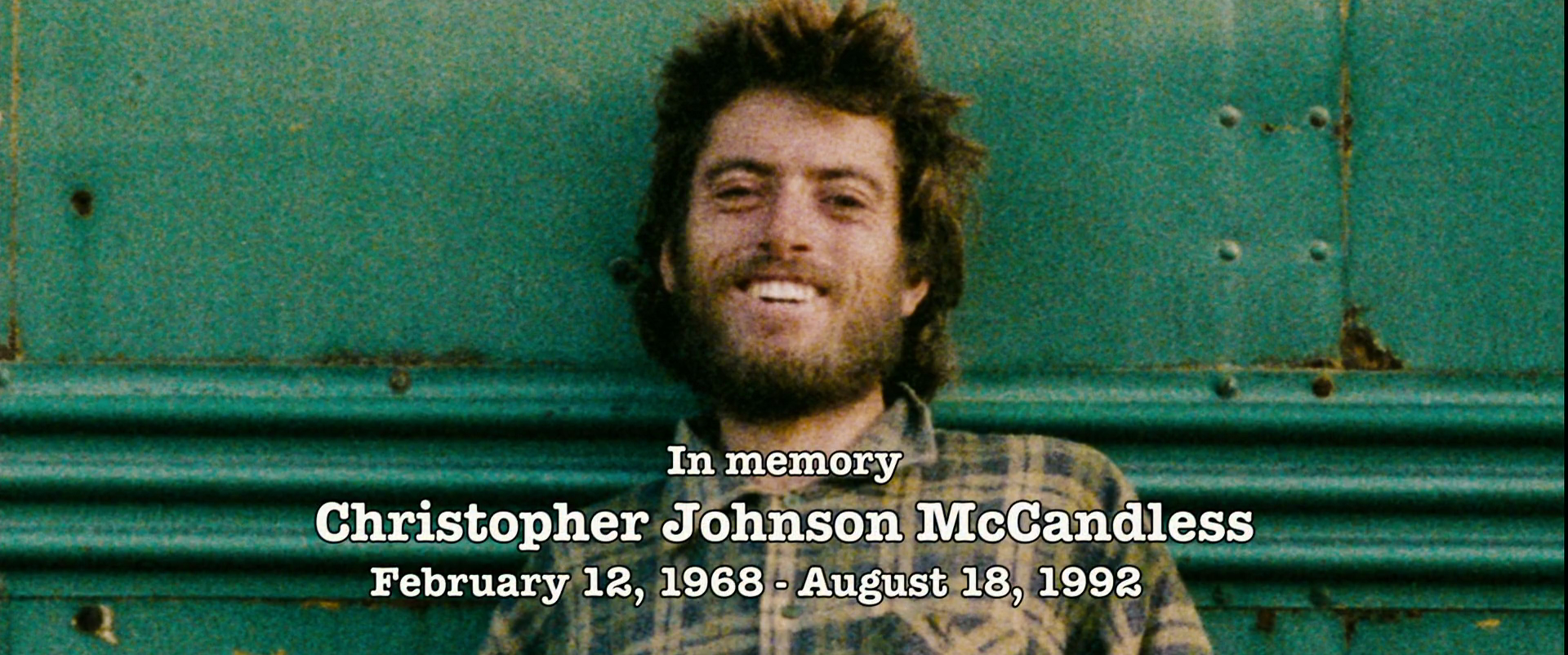The American Wilderness: an Ambivalent Image of Self-regeneration and Psychological Disintegration. From «Dead Man» (1995) to «Into the Wild» (2007).
Cette ressource est issue d'une présentation donnée dans le cadre de la journée de formation "Into the Wild: milieux et sociétés" inscrite au Plan Académique de Formation de Lyon (28 janvier 2021).
Introduction
Although it might not be the most expected opening to a presentation on the wilderness, I would like to begin with a brief statement about the opposite concept, that of oecumene ((See Martin Berny, “Nature et conscience de soi : l’étendue sauvage comme lieu de résolution des conflits intérieurs dans le cinéma et la littérature américaine” presented at the conference “Images et usages de la wilderness au Canada et aux Etats-Unis,” Université Paul Valéry, Montpellier, 12 October 2018. The author would like to thank Martin Simard for his own contribution to the conference, “Revoir le concept d’écoumène à l’aune des particularités des espaces Nordiques.” It is also useful to have the Wilderness Act of 1964 in mind, which describes the wilderness as an area “where man himself is a visitor who does not remain.”)) (Greek for “inhabited world”), a concept implying that when we are contemplating a wild landscape, it ceases to be a wilderness. The sole presence of a human in this habitat or even the glance of a human eye irreversibly alters this virgin land. It must be imagined – quite literally: we can only translate that notion into an image. Therefore, one should consider that the wilderness is but an image. That is precisely what is at stake in the Anthropocene or Age of Humans: a moment in History when the power of creation and reconstruction of the real overtakes the limits of reality – our imagination and capacity to represent things exceed actual natural resources.
In the American context, the logic of nature preservation and subsequent ecological concerns are reminiscent of the way colonists exploited and gained control of the American soil and disposed of the Native inhabitants. This logic supports a white dominant ideology and implies the more or less conscious reluctance to deal with the Indian genocide, the sixth mass extinction, or the destruction of natural resources at large.
Herman Melville wrote in Moby-Dick (1851) that true places are never to be found on any map ((“It is not down on any map; true places never are.” Herman Melville. 1988 (1851). “Chapter 12”, in Harrison Hayford, Hershel Parker, and G. Thomas Tanselle (eds), Moby-Dick. Northwestern-Newberry : Northwestern University Press.)), a statement particularly applicable to the wilderness. According to a tradition we will explore in this article, this image is also part of the myth of a self-regenerating American society. America is marked by hybridity on different levels: hybridity between savagery and civilization, as we will see, but also hybridity between an acute sense of the real and a process of mythogenesis. As historian Richard Slotkin argues, this process is “one of continuous activity rather than dramatic stops and starts” (1973, 4). In this sense, the wilderness is the origin and the end of the American ethos – the American dream of self-transcendence. More specifically, it is a place of initiation “into a new life or a higher state of being” (Ibid., 22), a place where young white men go to ritually reach manhood, to be purified and regenerated, to restore and heal the soul, while facing the constant peril of both physical and psychological disintegration. This paper will first focus on the origins of the American wilderness in terms of representation and the significant shift from fear and hostility to a more comprehensive attitude towards wild nature, culminating with the emergence of Transcendentalism and the birth of the Frontier thesis in the mid-to late 19th century. In order to uncover the survival of wilderness mythology in American culture, the second and third parts of this article will deal more specifically with recent examples, Jim Jarmusch’s Anti-Western Dead Man (1995) and Jon Krakauer’s journalistic investigation of the life of Chris McCandless Into the Wild (1996) and its subsequent film adaptation (2007).
1. The origins of the American wilderness: an ambivalent paradigm
Although Columbus’s dream was to find an earthly paradise, making his mission the fulfillment of ancient biblical prophecies, the wilderness was initially seized by the colonists as a barren territory, an uncontrollable force, or even hell on earth, a place of divine punishment. Far from the pastoral environment that would later become a trope in the representation of the American landscape, this free land was “instinctively understood as something alien to man” (Frazier Nash, 2014, 8).
The American effort of colonization relied on a process of transformation of this inhospitable territory into a fertile land – to quote the Bible “for in the wilderness shall waters break out, and streams in the desert” (Isaiah 35:6). Reversing the rapport between civilization and nature as established in Europe, Americans reconfigured the wilderness as an untouched sanctuary, the altar of a new creation, consecrating the pristine American nature as “God’s first templ[e]” ((To paraphrase a line from a poem by William Cullen Bryant, “Forest Hymn,” 1824.)), consequently conjuring the religious perils that were to this point associated with it.
The American narrative was put in parallel with the forced exile from Eden – that is to say the Old Continent –, an ideology culminating with the notion of America as “the Great Nation of Futurity,” a way of appropriating the Hebrew heritage and coining the concept of Manifest Destiny. This term was first used by John O’Sullivan in 1845 in an article to support the expansion of the territory and the annexation of Texas, proclaiming that there is a covenant, a religious contract between man and God in America (1845, 5-11). The wilderness became the place to reinvest with creative and almost genesiac energy, the virgin continent arousing apocalyptic expectations.
As Roderick Frazier Nash writes in the introduction to his Wilderness and the American Mind (first edition: 1967) “the largest portion of the energy of early civilization was directed at conquering wildness in nature and eliminating it in human nature” (Ibid., xii). Logically, this drove the colonists to project their own violence onto the indigenous inhabitants. Elise Marienstras contends that “the Indian character from the American narrative crystalizes the outer violence of natural forces as well as the irrepressible darkness that the Westerners hold within themselves” (1980, 18). In this respect, wilderness, as a contrasting notion upon which the American self was built, cannot be separated from the Natives and the way they were depicted. Ambivalence in the representation of the wilderness – from a chaotic and undefeatable hostile environment to a new promised land – resembles the American attitude towards the European heritage, the weight of the past, and a longing for absolute newness, which is best exemplified by the ambiguous stereotyping of Native Americans – people we can only know as an image constructed by and through popular culture, fitting the dual stereotype of the Savage or Noble Indian.
Romanticism, at the end of the 18th and the beginning of the 19th century – a moment when Americans formulated more precisely their ideal of the American Republic, leading to the emergence of the first great American writers and thinkers, such as Emerson, Hawthorne, Poe, Whitman, etc. –, propelled a form of disenchantment with the progress of civilization and the urge to go back to the colonial period to rewrite the history of the discovery and exploration of the continent. For the Transcendentalist movement, Wilderness thus appeared as the necessary step to give birth to the American self, and the place to regenerate one’s ethical relation with the American society at large.
In this perspective, Ralph Waldo Emerson’s Nature (1836), the founding work of Transcendentalism – a philosophical, literary, and religious movement centered around key notions such as anti-conformism, self-reliance, introspection, intuition, and experience –, establishes nature as “the symbol of spirit”. Transcendentalism also insists on the necessity for solitude and turning inward, to overcome identity crisis and construct the American self. According to Emerson, Americans must behold God and nature face to face to enjoy “an original relation to the universe” (2014, 17). It is precisely through one’s relation with nature that the hieroglyph of the human condition can be deciphered and truly understood. This introspective gesture makes the renewal of a philosophical and poetical order a true revelation. Through a primary contact with an almost divine nature, we can find the answers to the mysteries of life and the highest level of freedom, thus providing definite meaning to our lives. It is also the puzzling idea that you have to be lost to find your way. “Not till we are lost, (…) not till we have lost the world, do we begin to find ourselves, and realize where we are and the infinite extent of our relations”, Thoreau writes in Walden (1985, 459), his account of the time he spent living alone in the woods.
In his lecture “Walking” delivered in 1851 in his hometown of Concord, Massachusetts, Henry David Thoreau also said that “the West [was] but another name for the Wild,” and that in this “Wildness” lays “the preservation of the World” (1862, 657-674). Wild implies chaos and the loss of all points of reference, wilderness thus indicating places that were not on the map, virgin and free lands left to explore, the always receding frontier of the West and its promises. “We go westward as into the future,” Thoreau wrote (Ibid.); but “to go west, as far west as you can go, west of everything, is to die” (Tompkins, 1992, 24) and in that sense the Western as a film genre would later be the mark of a “death accepting culture” (French, 1997, 1-45). This surely leads us to seize the wilderness, not only as a place of physical danger, but also as the image of moral and psychological perils.
The Frontier theory presented by Frederick Jackson Turner at the turn of the 19th and 20th centuries gave way to this vision of the West as an all-encompassing myth explaining and justifying American history. That was certainly a way of integrating the colonial history of America and of giving a sense of continuity and coherence to the American experience, going past the Declaration of Independence of 1776 as the absolute beginning of the Nation’s history. To use Turner’s words, the frontier is this “meeting point between savagery and civilization” (1921, 3), an intermediary space between the pristine wilderness and the city as a model inherited from the Ancient World.
In this perspective, Turner’s historical standpoint is truly of its time, with its Darwinian undertone, legitimizing the appropriation of Southern and Western territories as well as the Indian Removal carried out through Andrew Jackson’s presidency in the 1830s-1840s – the painful deportation of hundreds of thousands of Native Americans. Adaptation is the key to survival, “the survival of the fittest” (Spencer, 1864, 444), and the first step for the colonist is to follow the Indian Trail.
The frontier is the line of most rapid and effective Americanization. The wilderness masters the colonist. It finds him a European in dress, industries, tools, modes of travel, and thought. It takes him from the railroad car and puts him in the birch canoe. It strips off the garments of civilization and arrays him in the hunting shirt and the moccasin. It puts him in the log cabin of the Cherokee and Iroquois and runs an Indian palisade around him. Before long he has gone to planting Indian corn and plowing with a sharp stick; he shouts the war cry and takes the scalp in orthodox Indian fashion. In short, at the frontier the environment is at first too strong for the man. He must accept the conditions which it furnishes, or perish, and so he fits himself into the Indian clearings and follows the Indian trails. (Turner, 1921, 4, emphasis mine)
Many books and films contributed to this rewriting and reinvention of history to allow for the assimilation of Native Americans and the emergence of the Western as a film genre (not defined as such until the 1930s) reinforced the prevalent double stereotype of the Noble Indian and the Bloodthirsty Savage in popular culture ((For further reading, see Martin Berny. 2020. « The Hollywood Indian Stereotype: The Cinematic Othering and Assimilation of Native Americans at the Turn of the 20th Century », Angles, volume 10. URL: http://journals.openedition.org/angles/331 ; DOI : https://doi.org/10.4000/angles.331)). In the early 20th century, people were expecting the inevitable vanishing of the Natives, their logical and so-called “natural” disappearance supporting Turner’s theory.
The following passage from William Carlos Williams’ In the American Grain (1925) sheds a different light on Turner’s description of the transformative process that takes place through contact with the wilderness, using the example of frontiersman Daniel Boone:
There must be a new wedding. But he [Boone] saw and only he saw the prototype of it all, the native savage. To Boone the Indian was his greatest master. Not for himself surely to be an Indian, though they eagerly sought to adopt him into their tribes, but the reverse: to be HIMSELF in a new world, Indianlike. If the land were to be possessed it must be as the Indian possessed it. Boone saw the truth of the Red Man, not an aberrant type, treacherous and anti-white to be feared and exterminated, but as a natural expression of the place, the Indian himself as 'right,' the flower of his world. (1925, 137-38, emphasis mine)
Here the Indian is a paragon to follow and the true master of the wilderness, allowing Boone to become a new man, completely indigenous to the American soil, although not exposed to the reverse assimilation described by Turner. We will now take a closer look at a recent film providing further illustration of a Native character guiding a so-called civilized white man through the wilderness.
2. Dead Man (Jim Jarmusch, 1995)
In Jim Jarmusch’s revisionist Western, Dead Man (1995), the wilderness is observed through a window, reminiscent of a projection screen, because the landscape and the free lands have become nothing more than just a set. Like a member of the audience, the main protagonist, William Blake (Johnny Depp) is invited to watch.
The framed image resulting from that cinematic dispositive makes him a rather passive spectator, an outsider who does not fit in the wagon of the train he is in, no more than he does in this savage landscape. As the train progresses westward, the ordinary landscapes transform into magnificent mountains and into a desert – mythical spaces exceeding the character’s own consciousness.
The Indian teepees then become proof that it’s not only a voyage through space but a journey in time. The strange relation between the landscape, the environment, and the physical and psychological integrity of the character will be made manifest in the film: the more Blake advances towards the Pacific Ocean (The Northwest Passage), the wilder the setting becomes, his own situation deteriorating accordingly – echoing the romanticized Emersonian ideal of an intimate relation between human spirit and nature.
As the train approaches its final destination – and that is the end of the line, the fittingly-named frontier town of Machine – the men aboard transform into trappers, shooting buffalos with their rifles from the windows of the train. That is a fairly accurate depiction of the great Buffalo extermination of the 1870s, which helps situate the film, and confronts viewers with the responsibility of such an act of destruction. If we remember the famous line of a U.S. Army colonel in 1867, “every buffalo dead is an Indian gone,” replicated several years later by General Phil Sheridan who claimed that the extermination of buffalos was “the only way to bring a lasting peace and allow civilization to advance" ((Quoted in Brown, 1970, 265.)), it becomes impossible to distinguish this slaughter from the Indian genocide. This passage of the film also questions our own attitude towards nature itself. The syllogism that gives equal value to the lives of buffalos and Native Americans, amplified by the presence of the out-of-place protagonist, suggests that the extermination of the buffalos participates in a self-destructive appropriation of the territory. Indeed, as the colonists are replacing Native Americans and exterminating buffalos, they are destroying their own habitat and ultimately killing themselves for the sake of civilization.
Blake is somehow regressing to this anterior state of violence and savagery – just like the viewers, he has gone back in time. Turner’s words – colonists morphing into savages – take a new turn: this time the railway leading to the Indian Trail shows that the progress of white civilization in the industrial age is the natural evolution that stemmed from the contact with the wilderness and the savages who occupied it – the blood of those ancestors and predecessors metaphorically flowing through American veins. The assimilation of the Natives and the appropriation of their territory imply that this belief is shared mutually or reversibly – subconsciously or to some degree, Americans surely believe in that filiation.
There are two leading points of view coexisting in Dead Man: William Blake’s – a perspective that echoes the train’s direction, linear and horizontal – and Nobody’s, the Indian character who is leading Blake in his journey through the wilderness and towards death, and, most importantly, the acceptance of death, through the accession to a higher level of consciousness, a form of liberation; for Nobody, life is a cycle.
The vertical dialectic opposing earth and skies finds its resolution in the horizontality of the wilderness, representing a time that is neither linear nor cyclical, a time that has no beginning and no end, a simple convergence line which depends on the observer’s point of view. In terms of perspective, horizontality is also unity – a unity described by Emerson, here in his essay “Circles” (1841), but also by William Blake (the poet, not the character) for whom “All religions are One”:
The eye is the first circle; the horizon which it forms is the second; and throughout nature this primary figure is repeated without end. It is the highest emblem in the cipher of the world. St. Augustine described the nature of God as a circle whose centre was everywhere and its circumference nowhere. We are all our lifetime reading the copious sense of this first of forms. One moral we have already deduced, in considering the circular or compensatory character of every human action. Another analogy we shall now trace, that every action admits of being outdone. Our life is an apprenticeship to the truth that around every circle another can be drawn; that there is no end in nature, but every end is a beginning; that there is always another dawn risen on mid-noon, and under every deep a lower deep opens. (Emerson, 2014, 226, emphasis mine)
The center is after all a relative notion: the division between civilization and savagery, as these terms were defined and understood in the late 19th century, relies on a particular standpoint – “around every circle another can be drawn.” The other – the Native American and the wilderness representing the utmost otherness – is to be discovered on his own terms, and it is necessary to determine a neutral point, beyond subjective spheres. As D. H. Lawrence put it:
The life of the Indian, his stream of conscious being, is just death to the white man. And we can understand the consciousness of the Indian only in terms of the death of our own consciousness. (1950, 46, emphasis mine)
At the end of the film, following Indian traditions, Blake is placed on a canoe and sent to the hereafter. The canoe drifts away towards the endless horizon, passing through the mirror “at a place where the sea meets the sky”. In his last moments, Blake is the witness of a lethal fire exchange between Nobody and the bounty hunter who was chasing them, as if everyone and everything had to vanish with him, the story closing in on itself. A rotating shot from a radical low angle represents Blake’s subjective view of the sky, from the canoe.
The ending might seem to be some sort of structural loop, as we end up taking on a journey that is just beginning, but from the opening sequence and the confinement of the railway car to the wide and almost infinite space of the ocean, from a passive spectator’s position looking through the window to the actual confrontation with the wild, the main character has returned to a form of natural state, accepting his own savagery, this inner revolution allowing himself “[to strip] off the garment of civilization” (as Turner would have put it). In Dead Man, the wilderness appears as the ultimate refuge, a space of transition to an almost metaphysical liberation that sprawls from the perspective of an Indigenous character.
The next part will explore to the fullest the motif of the wilderness as the place where to experience a form of symbolic or actual death and figurative rebirth. As a path to renewing one’s relation with nature in order to get away from the disarray of civilization, journeying through the wilderness thus appears as the most liberating adventure. The case of Chris McCandless, the real-life protagonist of Jon Krakauer’s Into the Wild (1996), has reached universal appeal and requires further attention for the purpose of establishing the grounds of the American fascination with the wilderness.
3. Into the Wild (Sean Penn, 2007)
Who is Chris McCandless? The original statement about the discovery of his lifeless body in Alaska published in The New York Times in September 1992 is still significant: “No one is yet certain who he was.” Almost thirty years after the events, McCandless “remains slippery, vague, elusive.” He is this Rorschach test in which the observer will find what he wants to see, either projecting or identifying himself or herself with him, or instinctively and ideologically rejecting what he stands for.
What makes Into the Wild such an interesting piece of work is the way it deconstructs and reconstructs Chris McCandless’s sensational and yet fatal journey through the North American continent, when, at age 22, he left a wealthy and predictable future behind to answer the call of the wild. Jon Krakauer, the author of the book, tries in this manner to produce a coherent whole out of the multiplying sources and points of view, found in letters, postcards, testimonies of those who knew Chris, literary and intertextual references, and of course the writing itself, the journalistic investigation, thus rearranging and filling in with hypotheses the few traces, vestiges of the young man’s life.
Shedding his skin, Chris abandons his former life and gives birth to his alter ego, Alex Supertramp, through a sort of baptism in the Mojave Desert – this desert thus becomes the place of fiction. This pivotal passage in the narrative is the centerpiece of Krakauer’s book.
To symbolize the complete severance from his previous life, he even adopted a new name. No longer would he answer to Chris McCandless; he was now Alexander Supertramp, master of his own destiny. (Krakauer, 2007, 22-3, emphasis mine)
I am reborn. This is my dawn. Real life has just begun. (167, emphasis mine)
Can this be the same Alex that set out in July, 1990? Malnutrition and the road have taken their toll on his body. Over 25 pounds lost. But his spirit is soaring. (37, emphasis mine)
McCandless’s exile through the Mojave Desert is the necessary step to reconnect with a purely American tradition: the theme of self-recreation, which makes nature the uterus through which you must be reborn, and more specifically the desert as an intermediary space between childhood and manhood. This recurrent motif can be found in some of the great paintings done in New Mexico by Georgia O’Keeffe, such as Rust Red Hills (1930).
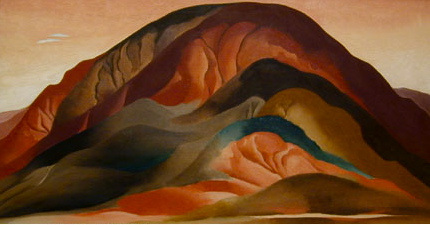
An important passage in Sean Penn’s adaptation of Krakauer’s book shows the extent of this sense of loss of the self, wandering through the wilderness, and the confrontation with the alter ego. Chris (or his double Alex) comes back to the city after the first part of his trip. He looks through the window of a restaurant and sees another version of himself, the one he could have been: a shiny young man dressed in a fine suit, seemingly and superficially happy.
This materialization of the double – a different kind of double than the dialectic that puts Chris in parallel with Alex Supertramp – gives all its power to Chris’ deep ideological rejection of modern life. For a short moment, doubt and identification here play off the mirroring and illusionary dimension of the window surface when the man he was staring at finally recovers his own face – that of a stranger.
But it is enough for the viewers to seize the exorcism and trial that his journey into the wilderness represents – not only to get rid of the weight of heredity, of a much-hated consumer society, but also to keep away from this other self that can always resurface. Not solely a mere psychological projection, this scene evokes through an interesting inversion of the place it is set in a passage from the New Testament. This time, Chris or Alex, a Christ-like figure, is driven from the desert to the city to be tested in the way “Jesus was led by the Spirit into the wilderness, where for forty days he was tempted by the devil” (Luke 4).
There is a religious, if not Emersonian, subtext in Sean Penn’s film version of Into the Wild, which is made visible by the cinematic dispositive used to represent the demise of its main protagonist. Chris McCandless’s death is some sort of epiphany taking place in the Natural Church of the wilderness. The camera is hovering from a high angle, supported by a ghostly soundtrack, a kind of spatial hum; all this participates in creating a ceremonial atmosphere. Chris dresses up and enters his sleeping bag, fully aware of the significance of this last gesture, proving his consent to dying, the acceptance of his fate. A subjective shot showcases the character’s vision: a portion of blue sky and a cloud seen from below.
This vision, from the inside looking out, framed by the inside of the bus, emphasizes the isolation-liberation dialectic. This shift from the state of being and seeing to a lifeless body, and more so to a soul leaving its prison of flesh, gives us an image of what cannot be represented, when the camera tracks out, ascending up in the air, forging a purely objective and disembodied view of the bus and the body, through an all-encompassing geographical distance.
It may be the eye of nature itself, the new uterus that shall bear Chris into a new life or metaphorical rebirth.
By the end of his book, Krakauer’s voice as the narrator of Chris’ story materializes when he finally appears as a protagonist of the narrative, taking in charge the pursuit of the investigation. The doubling effect is striking when he is watching the opposite shore of the Teklanika River – a line that symbolizes the distance between the two men’s destinies, and the fact that one of them is gone and the other here to deliver his story.
A year and a week after Chris McCandless decided not to attempt to cross the Teklanika River, I stand on the opposite bank—the eastern side, the highway side—and gaze into the churning water. I, too, hope to cross the river. I want to visit the bus. I want to see where McCandless died, to better understand why. (Krakauer, 2007, 172, emphasis mine)
“I want to visit the bus. I want to see where McCandless died, to better understand why.” This “incessant need to authenticate the real” (Barthes, 1984, 185) is translated in Sean Penn’s film by the photograph of the real Christopher McCandless that follows the cinematic depiction of his last moments.
The camera is artificially tracking in, zooming into the photograph, in a manner that is the opposite movement of the backward spatial ascension of the soul into the skies. The camera movement reminds us that it is a true story – albeit well told.
When we stare at this final photograph, as we penetrate it artificially, the film’s grain crystalizes on the still image.
The overview of the Alaskan desert and the iconic Fairbanks Bus 142 where Chris McCandless took his last breath was a way of “shutting the landscape” to open up the photograph and inhabit the picture. Applying Emerson’s philosophy to the film, we understand that wandering through the wild ultimately leads back to the most arid regions: the wilderness of the self. Are we merging with Chris? Are we merging with nature? All in all, is it the same process? Our gaze is here experiencing its own limits. Merleau-Ponty writes that “the life of others, just as they live it, remains for [us] ‘a forbidden experience’” (1979, 108). But as Toni Morrison comments in her essay “Memory, Creation, and Fiction”, “the deepest and earliest secret of all: that just as we watch other life, other life watches us” (1984, 390).
The end of Sean Penn’s film, moving away from the fictitious narrative, from the cinematic fabrication, from nature and the wild, to focus on this photograph, somehow gives us the impression that the life of Chris McCandless – the real Chris McCandless – is also a fiction. This process allows us to reaffirm our own identity and our own reality. Entering the image is more than just experiencing the thrill of McCandless’s journey into the wild, it is virtually becoming Chris.
The very last shot of the film shows a plane ascending through the sky, seen from a low angle, from the ground, and from the distance.
The movement indicates that we must follow the trail and assume the heritage left by McCandless and undertake our very own journey into the wild – a spiritual journey. We might have the intuition that we don’t have the courage to get to the end of the line, to follow that trail to its very end, to experience freedom and liberation in its highest form – that is to say to disappear. This photograph is sublime in the sense that we firmly resist the idea of McCandless’s death, and ultimately the idea of our own death. This gesture exposes that we are subverting the non-representable idea of Chris’ death, changing it into the more acceptable and liberating aspect of his journey – the same way we are conjuring and diverting our attention from the ecological disaster.
Sean Penn’s film shows nature as the means to reach freedom – which is a beautiful idea – but the self-portrait implies that it is a form of spiritual liberation, exceeding our imagination, putting some distance between McCandless’s true destiny and our own – paradoxically through our identification with him. But to grasp the essence of Chris McCandless, we must travel this narrow path between fiction and reality, between our inner wildness and the outward wilderness, to reconstruct a significant real – to provide a meaning to his experience – and that requires to take our chances and risk that the difference between the two might be thinner than we think – we might get lost into this wilderness ((For further reading and the basis of this reflection, see the upcoming publication on The Desert and the United States of America, held in Lorient (UBS) on November 21-22, 2019, organized by Karim Daanoune, and more specifically Martin Berny, “Fragments, dédoublement, multiplicité : désertification littéraire à l’œuvre dans Into the Wild de Jon Krakauer.”)).
Conclusion
Ambivalence in the representation of the wilderness ultimately leads back to questioning the construction of the self, as it shows that in the continuous process of adapting to, mastering, and preserving nature a culture asserts itself. Journeying through the wild is a way of unveiling what lies behind progress and civilization, a path to acknowledging that the national narrative was purposely written in order to structure American culture. In this respect, nature conservation is part of the legacy of the “received wilderness idea” (Callicott and Nelson, 1998, 2), an ethnocentric ideology that helped the colonists seize nature as a tool of expansionism and genocide. It can therefore be argued that the wilderness represents a corner stone of American nationalism.
Appealing characters such as Chris McCandless or William Blake can teach us a lot about our estrangement from the natural world. They can also indicate a way to restore one’s sense of authenticity and to move beyond the limits of the cultural fabric, through a pattern of self-identification to discover “the real self”. More critically, the impulse to get away from the discontents of modern civilization and the fantasy of living in the wild seem to be an individual response to a communal malaise. That should contribute to the realization that there is nothing to be found in nature but nature – as exemplified by the liberating demise of those characters.
For educational purposes, it seems interesting to question our own attitude towards nature. The shift in American history, from men protecting themselves from the wild, then protecting the wilderness from the overbearing and destructive power of civilization, illustrates an act of hubris and dominion that gives culture and society its role and structure. In that sense, preserving the wild also perpetuates the traditional separation of man from nature, a view that should be scientifically, ethically and philosophically challenged. It similarly points to the difficult coexistence of man and biodiversity
The subject of the nature of man and his place in the universe should make us realize the world was not made for us, but that we are reimagining it and reshaping it as if it were the case – thus destroying it; or, as Emerson writes:
Every spirit builds itself a house, and beyond its house a world, and beyond its world a heaven. Know then that the world exists for you. For you is the phenomenon perfect. (Emerson, 2014, 54)
Revisiting that statement, we see how men gradually pushed the wilderness away from “world” to “heaven” in order to make this world habitable, subsequently de-realizing the natural world, making it a mythical place. But, if we read more closely Emerson’s final words in Nature, with the humbleness that such a reading entails, we can see how “the kingdom of man over nature” is precisely “beyond his dream of God” (Ibid.). To return to reality and the reality of nature – if such a thing is possible – we need to radically change this attitude: man should live (and die) as being part of nature instead of dominating it; this will allow us to regain “perfect sight” (Ibid.).
Notes
Bibliography
BARTHES, Roland. 1984. Le Bruissement de la langue. Paris : Seuil.
BROWN, Dee. 1970. Bury My Heart at Wounded Knee: An Indian History of the American West. New York: Holt.
CALLICOT, J. Baird, and NELSON, Michael. 1998. The Great New Wilderness Debate. Athens, GA : University of Georgia Press.
EMERSON, Ralph Waldo. 2014. The Portable Emerson. New York : Penguin Books.
FRAZIER NASH, Roderick. 2014 (1967). Wilderness and the American Mind. New Haven : Yale University Press.
FRENCH, Peter A. 1997. Cowboy Metaphysics: Ethics and Death in Westerns. New York : Rowman and Littlefield.
KRAKAUER, Jon. 2007 (1996). Into the Wild. 1996. Londres : Pan Macmillan.
LAWRENCE, D. H. 1950 (1927). Mornings in Mexico. Londres : Penguin.
MARIENSTRAS, Elise. 1980. La résistance indienne aux Etats-Unis. Paris : Gallimard.
MERLEAU-PONTY, Maurice. 1979 (1964). Le Visible et l’Invisible. Paris : Gallimard.
MORRISON, Toni. 1984. « Memory, Creation, and Writing », Thought, volume 59, n°235.
O’SULLIVAN, John.1845. « Annexation », United States Magazine and Democratic Review, volume 17, n°1.
SLOTKIN, Richard. 1973. Regeneration Through Violence: The Mythology of the American Frontier, 1600-1860. Middletown : Wesleyan University Press.
SPENCER, Herbert. 1864. Principles of Biology, Volume 1. Londres : Williams and Norgate.
THOREAU, Henry David. 1985 (1854). A Week on the Concord and Merrimack Rivers. Walden. The Maine Woods. Cape Cod. New York: Library of America.
--. 1862 (1851). « Walking », The Atlantic Monthly, A Magazine of Literature, Art, and Politics, volume 9, n°56, pp.657-674.
TOMPKINS, Jane. 1992. West of Everything: The Inner Life of Westerns. New York : Oxford University Press.
TURNER, Frederick Jackson. 1921. « The Significance of the Frontier in American History » in The Frontier in American History. New York : Henry Holt & Company.
WILLIAMS, Carlos William. 1925. In the American Grain. Norfolk : New Directions.
Pour citer cette ressource :
Martin Berny, The American Wilderness: an Ambivalent Image of Self-regeneration and Psychological Disintegration. From Dead Man (1995) to Into the Wild (2007)., La Clé des Langues [en ligne], Lyon, ENS de LYON/DGESCO (ISSN 2107-7029), juin 2021. Consulté le 16/11/2025. URL: https://cle.ens-lyon.fr/anglais/arts/cinema/the-american-wilderness-dead-man-1995-into-the-wild-2007



 Activer le mode zen
Activer le mode zen